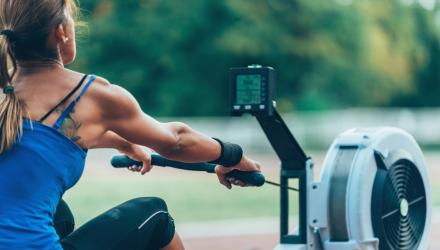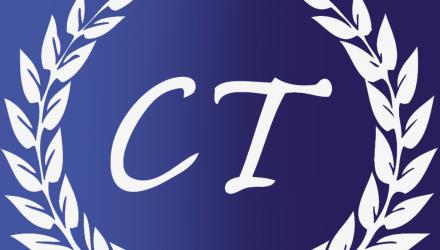In the last article in a three-part practice-based learning series, CSP advisers Nina Paterson and Gwyn Owen look behind the scenes at the CSP.

As the CSP’s practice-based learning campaign gathers momentum, it’s clear that members are committed to creating new opportunities for practice-based learning. The process of thinking critically and creatively about what’s offered to students, and how, is generating questions about what makes a ‘good quality’ placement.
This article will explore how the CSP’s quality assurance and enhancement processes ensure that members benefit from investments in practice-based learning. The aim is to help the profession develop to meet changing patient, population and service needs.
Royal Charter
The CSP has always taken its role as an educational body that validates degree courses very seriously – our responsibilities in this area date back to the establishment of the Royal Charter in 1920. We believe our processes are robust and effective. All programmes must demonstrate that they have responded to four elements: CSP learning and development principles, expectations of pre-registration programmes (as set out in the 2010 CSP quality assurance processes), the graduate attributes outlined in the physiotherapy framework, and the CSP code.
- Visit the practice-based learning area on the CSP website.
Given that students must spend at least 1,000 hours in practice settings, it’s clear that appropriate practice-based learning is crucial. If students are to be autonomous practitioners after completing their studies, they need to gain experience in a range of clinical settings. Changes in how health services are commissioned and delivered mean there are many new providers. There is an expectation that they will offer opportunities for students. Some great examples are happening in parts of London, where new and existing providers are working closely together. One university offers students part-time placements lasting one year – tapping into settings where most physios are work on a part-time basis and where taking students on block placements might be awkward.
The responsibility for developing physiotherapy education has shifted in recent years. When I (Gwyn) was a student, the curriculum seemed fairly prescriptive. Students had at least two placements in three core areas, supervised by a senior clinician in that specialty. While the curriculum is, thankfully, more flexible now, the question remains: how can students gain the experiences they need to meet the demands of practice – today and tomorrow?
Physiotherapists fought hard to gain the status and autonomy that enabled the profession to spread its wings. As we evolve, we work in healthcare settings with a wider range of client groups and hold new occupational roles. Students need exposure to as wide a range of these experiences as possible.
That’s why flexibility is vital: it isn’t about ‘cramming more in’ – it’s about making the most of what’s on offer. This echoes what managers say they are looking for: graduates who think, and learn, quickly. They don’t expect recent graduates to know everything, but they need them to be grounded in the basics and to be able to find out what they don’t know, and to ask questions. An outcomes-based approach recognises that these qualities are the student’s end point – how they get there depends on the student’s journey.
So this approach creates space to look beyond the label attached to a placement, and prompts a fundamental shift – from having to teach students everything about ‘my speciality’ to creating opportunities for students to develop values, behaviours, knowledge and skills that suit the setting.
What’s the CSP approach?
The CSP used to have more than 20 guidance papers on practice-based learning. These have been consolidated into the resources mentioned above, and are also contained in the CSP’s practice education guidance and resources on welcoming disabled students.
These should be read by every member and will help to debunk the myth ‘that someone in the CSP says do it this way’! Our approach is as follows: there is no obstacle that can’t be resolved with some creativity and problem solving. After all, physios are renowned for being ‘doers and fixers’, aren’t we?
Though the guidance isn’t prescriptive, we do encourage members to think critically and creatively about:
- the range of models and what might work in your setting,
- the potential risks and how to establish structures and processes to manage them,
- the support and resources required.
- Our webinars show examples of effective practice-based learning in different settings.
- If you’re doing something others might be interested in, email learning&development@csp.org.uk fl
Setting up a placement opportunity from scratch
There are three key steps:
- consider the learning opportunities in your setting.
- identify what you can offer, such as case-mix, time frames, physical space and staff development needs.
- contact your local higher education institution to discuss options. I’m sure they’ll bite your hand off! (see ‘Did you know?’ below).
Did you know?
When the CSP accredits a higher education institute or re-accredits it, we dig around and ask lots of questions.
There are eight main areas of interest;
- how students develop the breadth and depth of physiotherapeutic skills,
- the opportunities to experience the breadth of the profession,
- how learning in university and practice fit together,
- how placements are organised,
- how they are evaluated,
- how they are assessed,
- how students are supported in an inclusive way,
- how practice educators are supported and developed. The CSP Code refers to members’ responsibilities regarding practice-based learning, and we expect teams to provide formal opportunities to support this.
Author
Nina Paterson and Gwyn Owen CSP advisers
Number of subscribers: 2




































